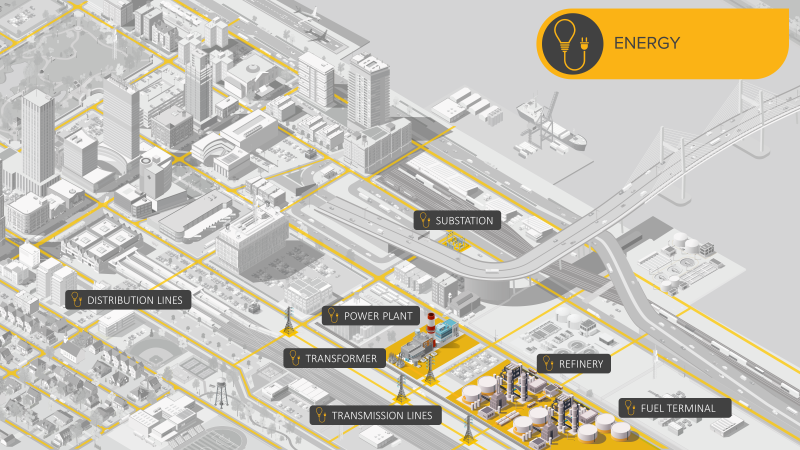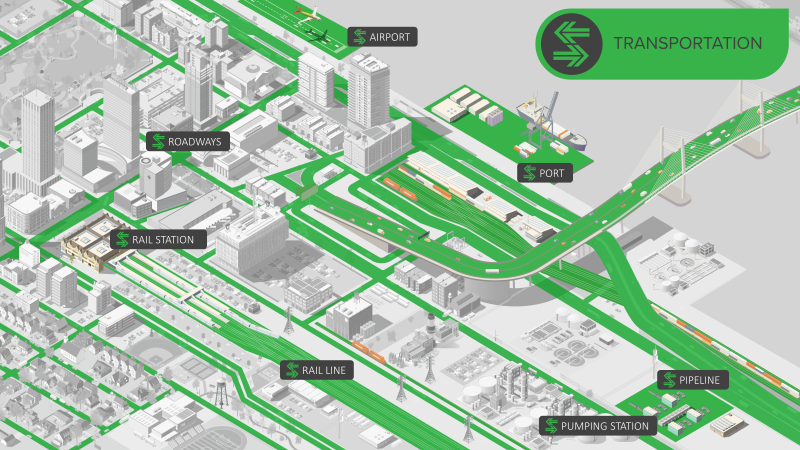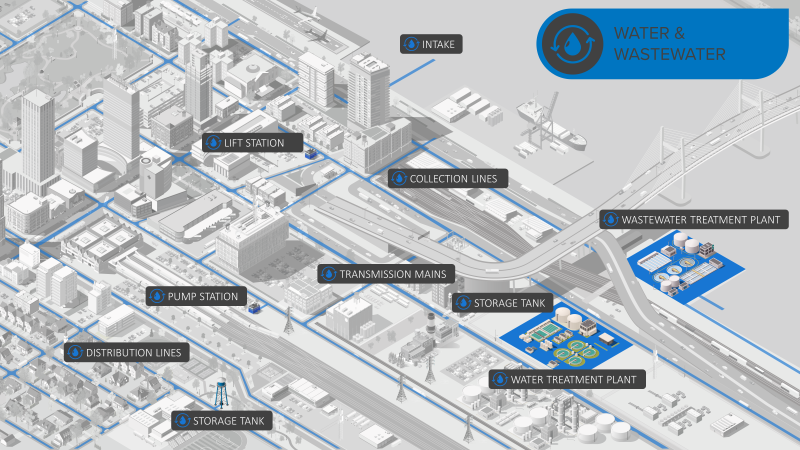Critical Infrastructure Systems
Infrastructure systems are the backbone of communities. While all infrastructure plays a role, some infrastructure systems are more critical than others. Critical infrastructure are those infrastructure systems and assets that are so vital that their incapacitation or destruction would have a debilitating effect on security, the economy, public health, public safety, or any combination thereof.
The U.S. Department of Homeland Security has defined 16 sectors or categories of infrastructure that are considered critical to the nation. At the local level, some of these systems may be owned or operated by local government partners and many of them will be vital to the health, economy, and security of the community or region.
These critical infrastructure sectors are related to and resemble the community lifelines FEMA uses to discuss essential systems within response and recovery operations. Both the sector and lifelines constructs can be used to consider infrastructure dependencies. Within this primer, we will take a closer look at several infrastructure systems that are key to resilience whether looked at through a sector-based or community lifelines lens.
Each critical infrastructure system is made up of individual assets that work together as an integrated system. The figures below illustrate the networking of assets using four of the most important critical infrastructure systems as examples. These four infrastructure sectors—Energy, Communications, Water, and Transportation—are critical to the operations of almost all other sectors, as well as each other, and are fundamental to the delivery of the basic societal functions communities seek to provide. While each figure only depicts a single, simplified system within each sector (there are many, and many variations!), they help illustrate the interconnected nature of those systems and their reliance on many individual assets.








